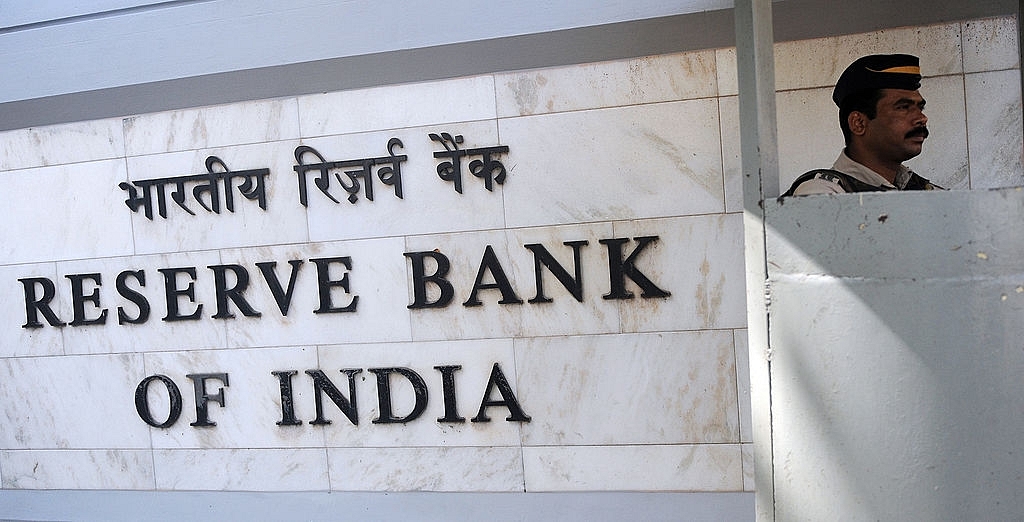Economy
Despite Rise In July CPI Inflation, Chief Economic Adviser Is More Likely To Win Argument With RBI
- If GDP is shown to be slowing or remains flat, the case for pretending that inflation is a bigger challenge than growth will be laid to rest.

The Reserve Bank of India (RBI) head office in Mumbai. (PUNIT PARANJPE/AFP/Getty Images)
The upward spike in July wholesale (WPI) and retail (CPI) prices does not in any way validate the Reserve Bank of India’s (RBI) dogged focus on inflation when the challenge is growth.
While the CPI rose to 2.36 per cent, above the bottom end of the range agreed between the government and the RBI, the WPI rose to 1.88 per cent. This might sound like the RBI was right to be cautious about future inflationary pressures and not cut rates by more than a token 0.25 per cent in the last monetary policy, but these numbers – like the sighting of one swallow in summer – should be juxtaposed against the negative growth (-0.1 per cent) in the Index of Industrial Production (IIP) for June. There is also the prospect of July IIP not performing any better, especially given the context of the uncertainties accompanying the implementation of the goods and services tax (GST).
There is something unreal about fretting over a price index’s temporary movement when farmers are agitating all over for better prices and every mall in the country is offering big discounts to drum up sales.
The problem with our price indices is not that they are wrong, but that small, temporary, spikes or crashes in one or two items (it could be tomatoes in July) have a disproportionate impact on retail food inflation.
The rise in CPI inflation in July was impacted largely by food. While the general CPI rose by 2.36 per cent, much of this came due to the shift in food inflation from highly negative (-2.12 per cent in June), to neutral (-0.29 per cent) in July. In other words, even though food inflation still remains marginally negative, the sharp drop in the level of negative inflation impacted the main CPI.
The RBI can do nothing about food inflation, which depends on the vagaries of the monsoon, and supply side interventions and policies of the government. So, to use temporary food inflation as an excuse for going slow on rate cuts is wrong, especially when manufacturing and services are facing weak demand, output gaps, and the deflationary impact of higher GST (especially services).
It is fair to keep rates up when food inflation is widespread and persistent, not when it is episodic and limited to a few commodities and disruptions like GST.
Another argument for caution on rate cuts could be that the favourable base effect will end in August, and thus spikes may be higher in future. But this argument cuts both ways. If favourable base effect is one of the reasons to discount the fall in the CPI in the last six months, one cannot now claim that the price index has greater authenticity when the base effect is gone. You can either discount the base effect in both directions, or ignore it in both directions. But the RBI studiously discounted base effect-driven falls in the CPI this year.
In the long argument between the RBI and the Chief Economic Adviser over inflation and growth, the balance of probability lies with the latter’s analysis that that disinflationary or deflationary forces are still rampant, not the RBI’s assumptions on inflation.
Perhaps the gross domestic product (GDP) numbers for the first quarter, due on 31 August, will settle the argument once and for all. If GDP is shown to be slowing or remains flat, the case for pretending that inflation is a bigger challenge than growth will be laid to rest.
Introducing ElectionsHQ + 50 Ground Reports Project
The 2024 elections might seem easy to guess, but there are some important questions that shouldn't be missed.
Do freebies still sway voters? Do people prioritise infrastructure when voting? How will Punjab vote?
The answers to these questions provide great insights into where we, as a country, are headed in the years to come.
Swarajya is starting a project with an aim to do 50 solid ground stories and a smart commentary service on WhatsApp, a one-of-a-kind. We'd love your support during this election season.
Click below to contribute.
Latest